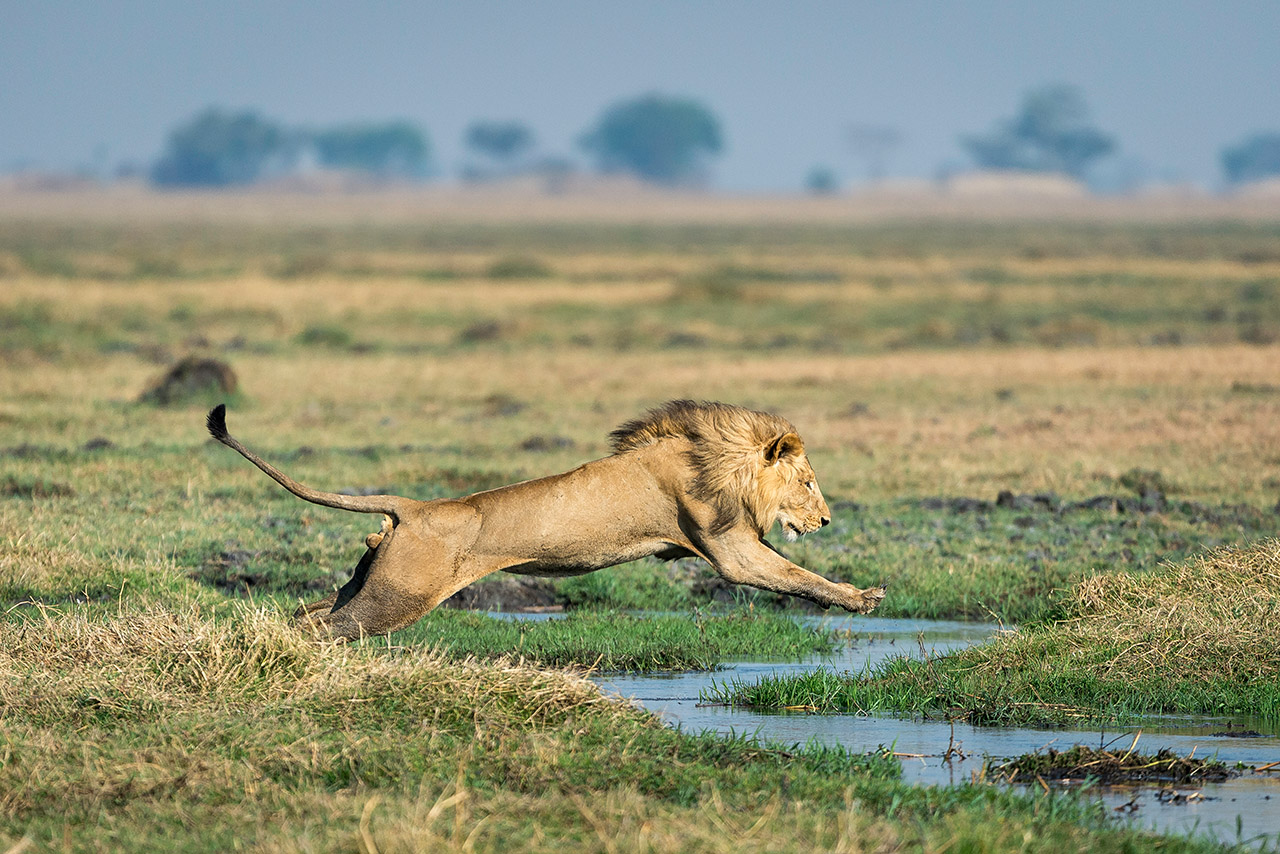
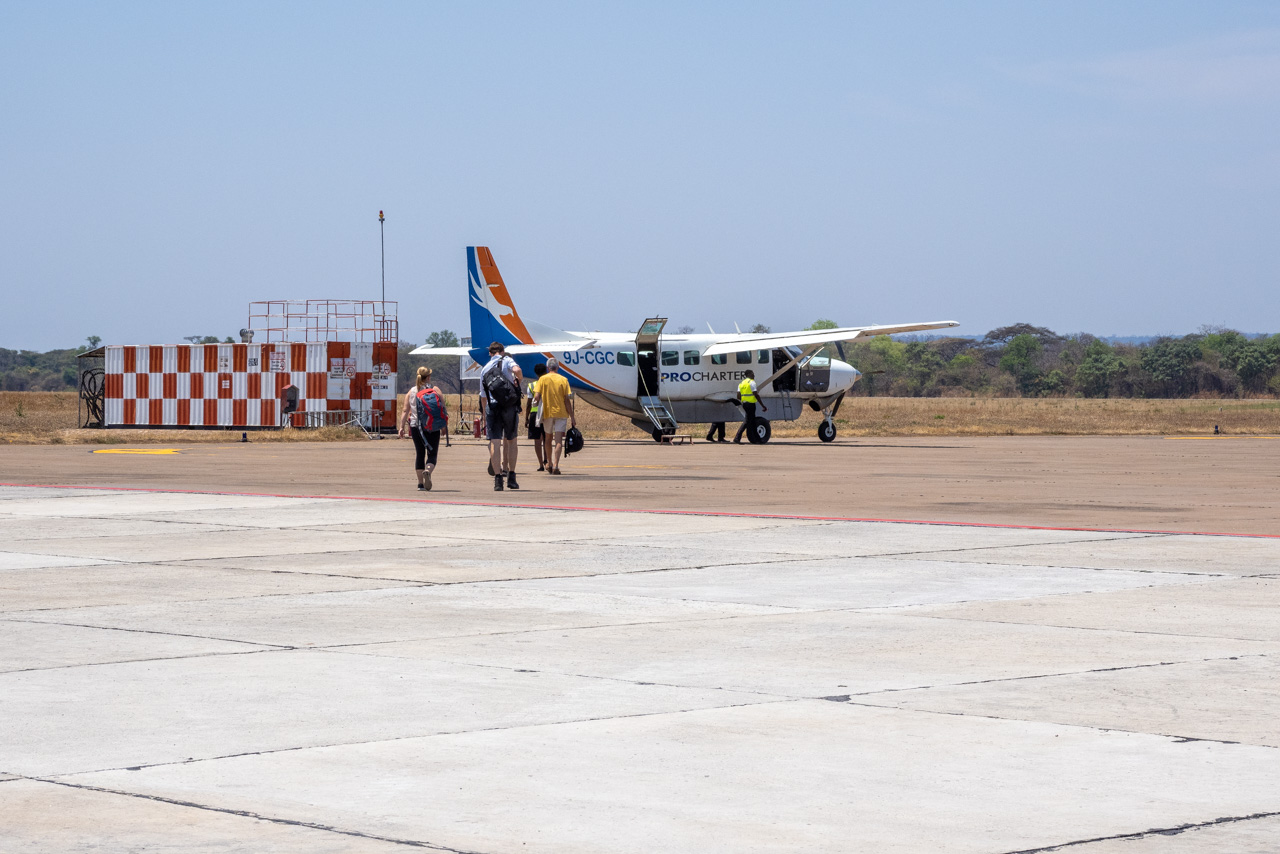

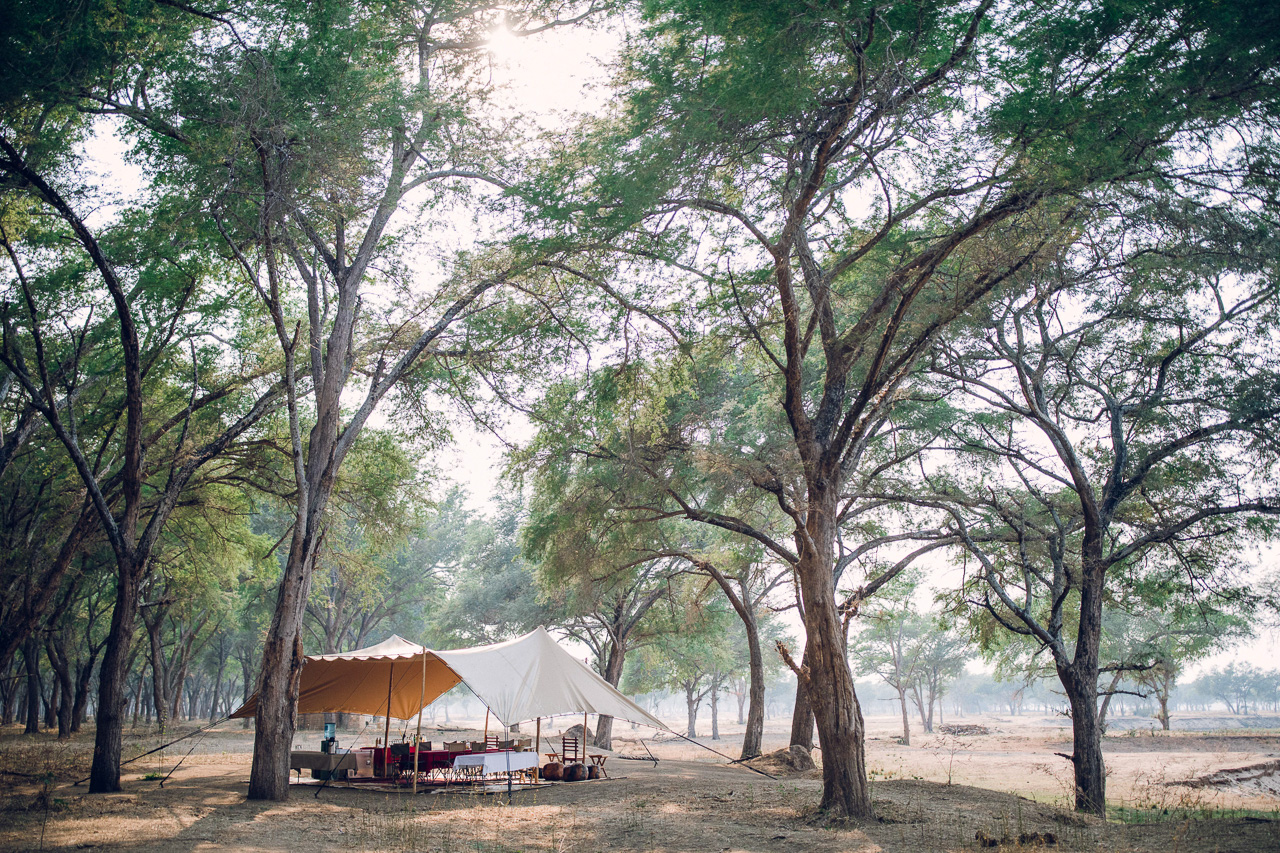
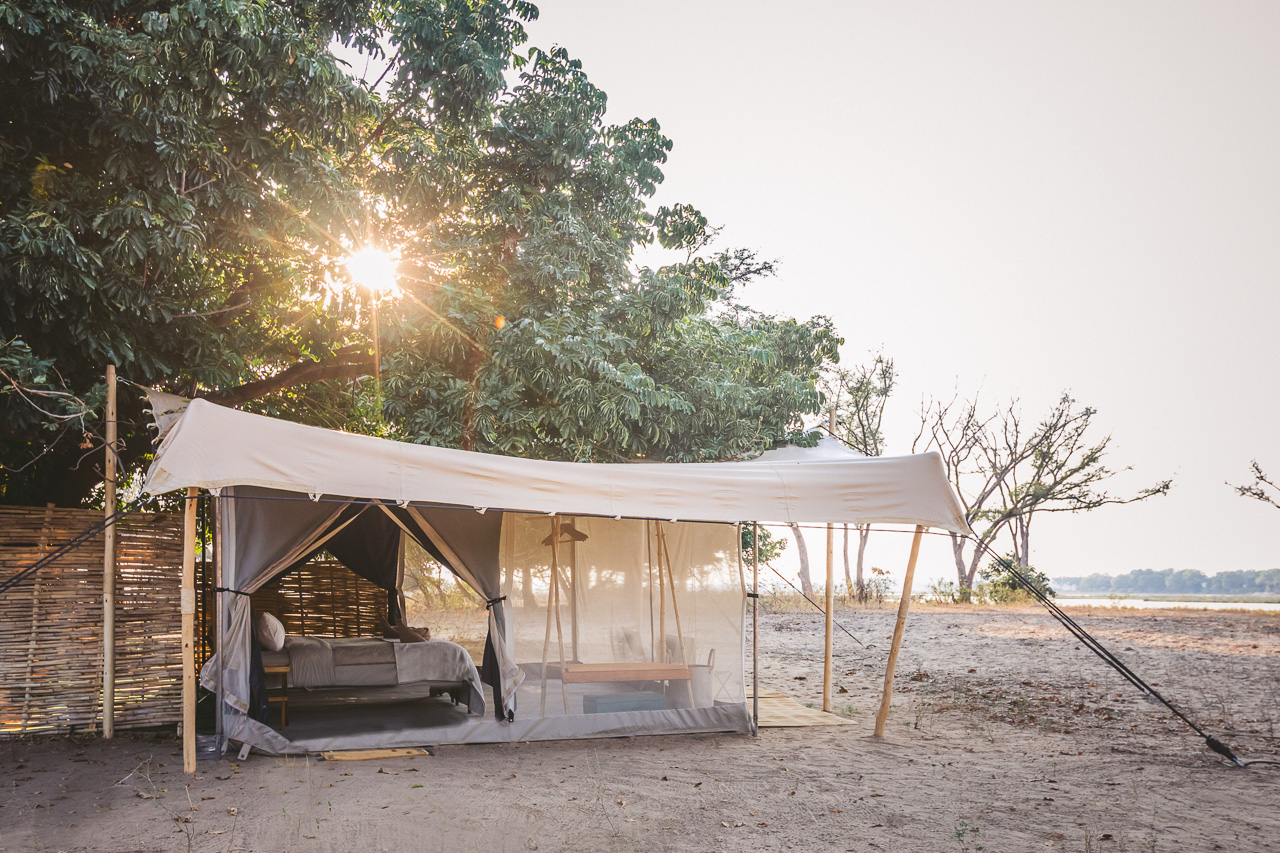
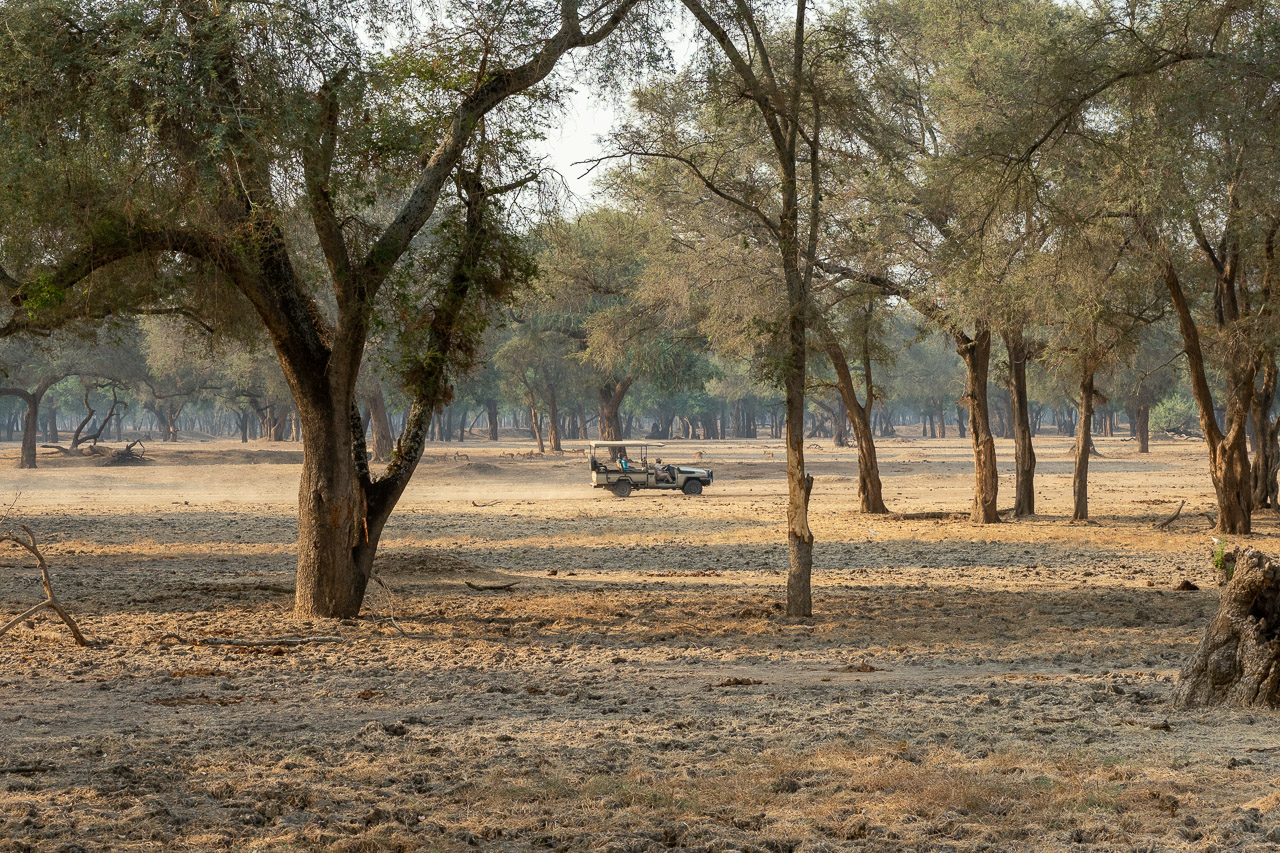
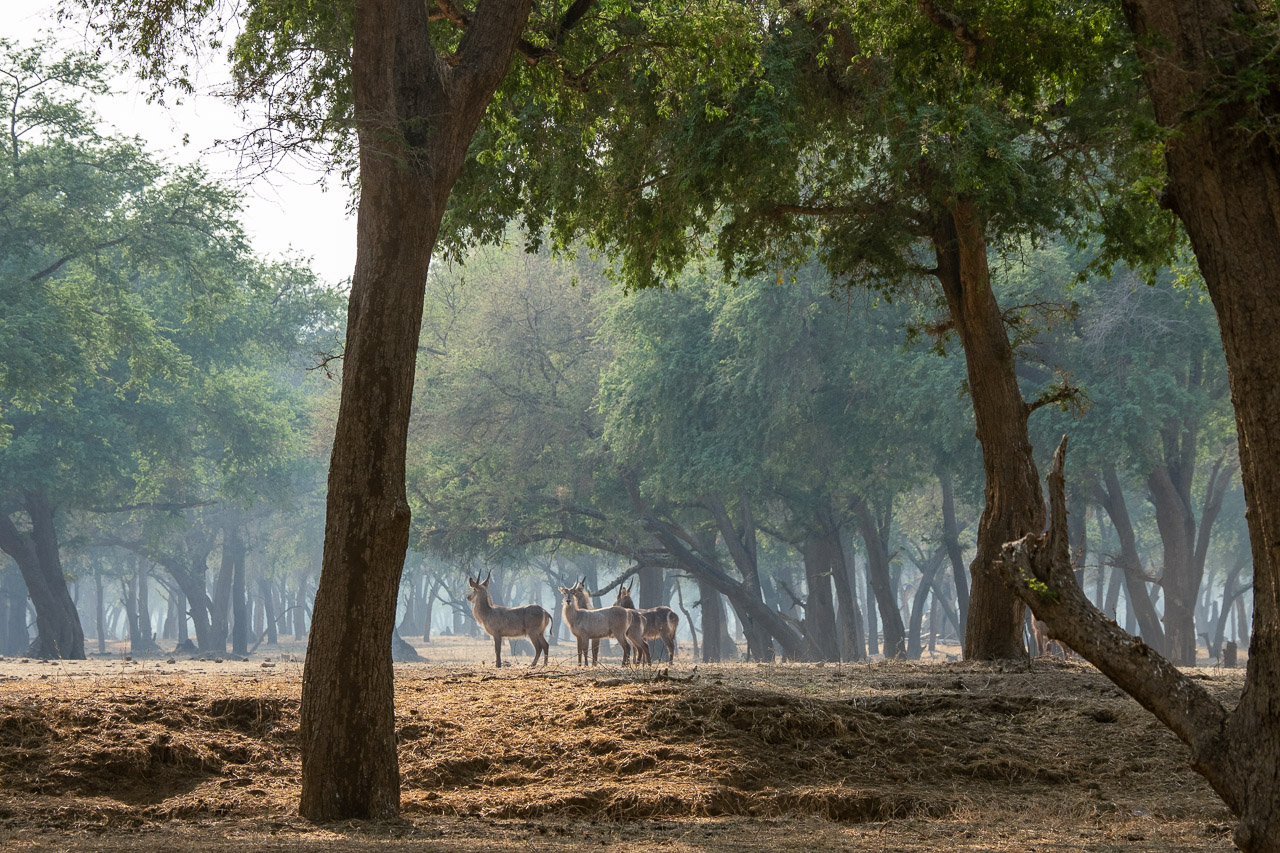
Accommodation
Tusk & Mane’s (Classic Zambia) intention is to return to simplicity, back to the roots of the original safari. The owners - Kyle Branch and Luke Evans - both grew up in the African bush and wish to give guests an understanding of the pure safari experience of their childhoods. This is achieved by good guiding, simple but very functional and well thought-out fly camps and plenty of campfire story-telling.
Tusk & Mane operates two camps, Kutali and Chula. Each camp consists of 5 very airy and identical tents that are positioned far apart on the banks of the mighty Zambezi River. All tents have comfortable beds, en-suite bathrooms with traditional bucket showers, flush toilets and washbasins with mirrors. A simple bedouin-style tent with a large table and a well-stocked bar defines the main area.
Each camp is small and well-structured, which makes the safari experience very personal. At the end of the season the camp will be torn down, only to be rebuilt in April / May next year.
Both Kutali and Chula are located in the vicinity of Old Mondoro Camp, about a 15 minute boat ride apart. The camps are accessed by airplane from Lusaka to Jeki Airstrip. The flight is followed by a 30 to 40 minute drive in an open game drive vehicle to the respective camp. The camps are often referred to as beeing on an island, but in fact it is just a smaller channel that separates the "island" from the main land. Having said that, a boat transfer is required to access Chula, whereas the channel surrounding Kutali can be crossed by vehicle.
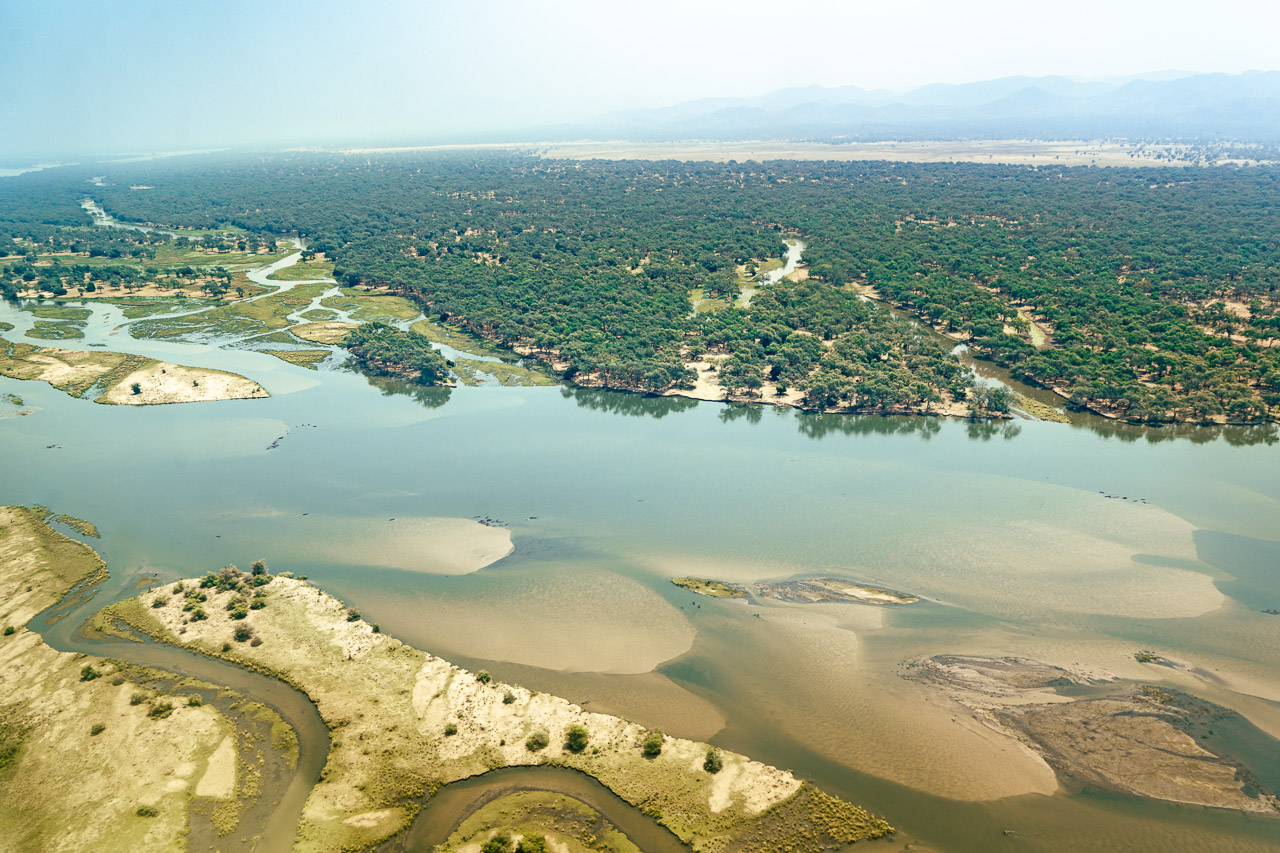
The camps are all located on the riverside, which pulls in large herds of elephant and buffalo. The best camps offer canoeing safaris on the Zambezi’s tributaries or trips on the Zambezi River in flat-bottomed boats. In addition to game drives, walking safaris are also usually on offer – there is something different to do here every day.
An abundance of elephant gathers in the Lower Zambezi region, and the pachyderms are permanent visitors to the camps, so keep your eyes peeled when walking back to your room.
It gets very hot and sultry in October, just before the wet season begins. If you keen on walking and suffer from the heat, please visit earlier in the season.
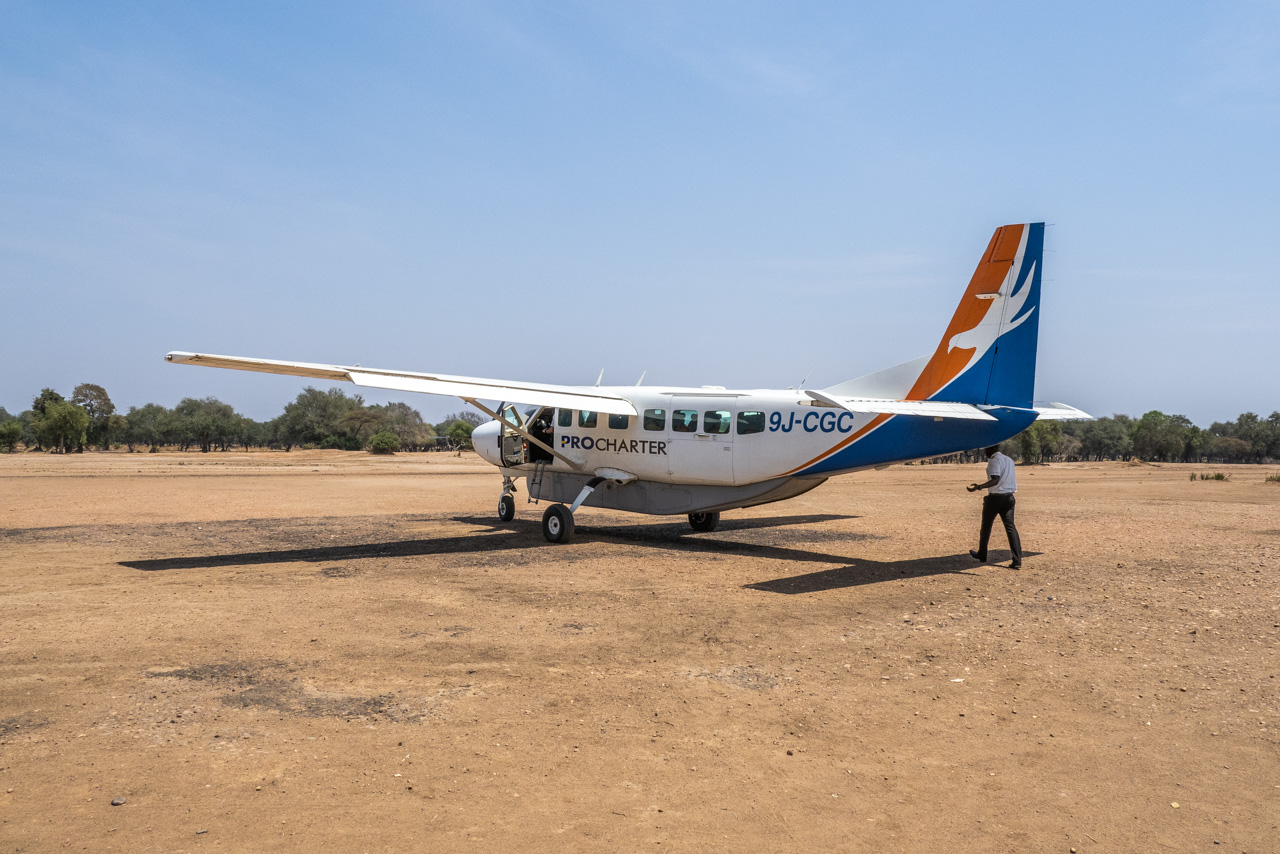
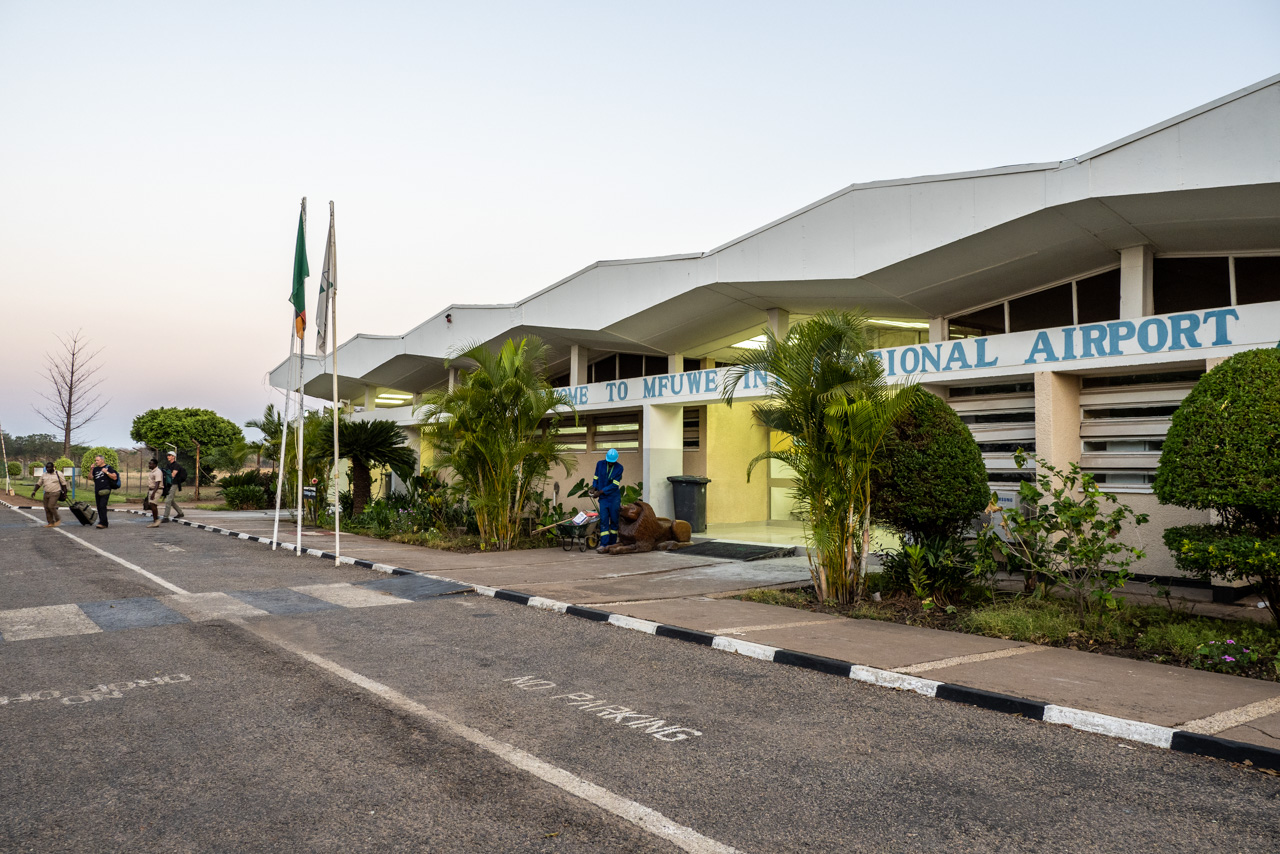
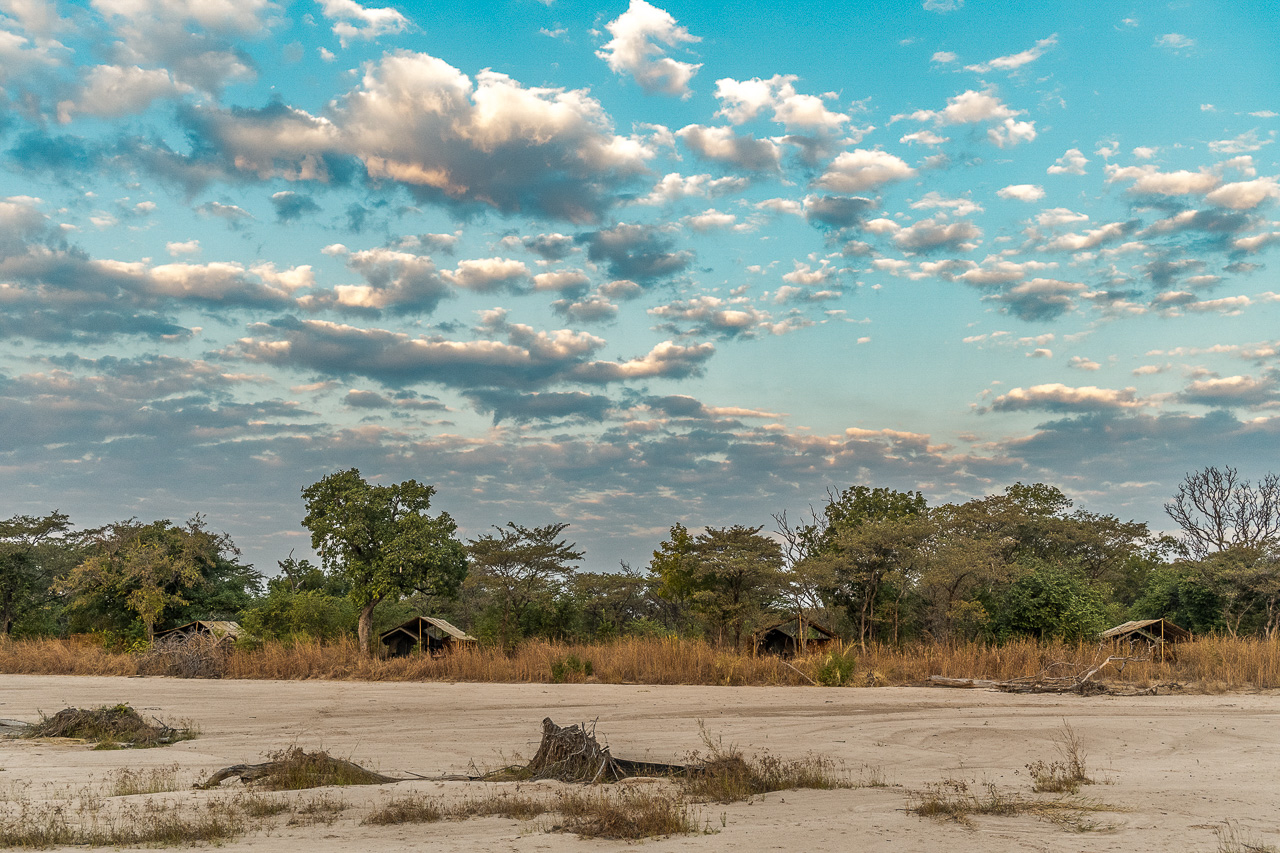
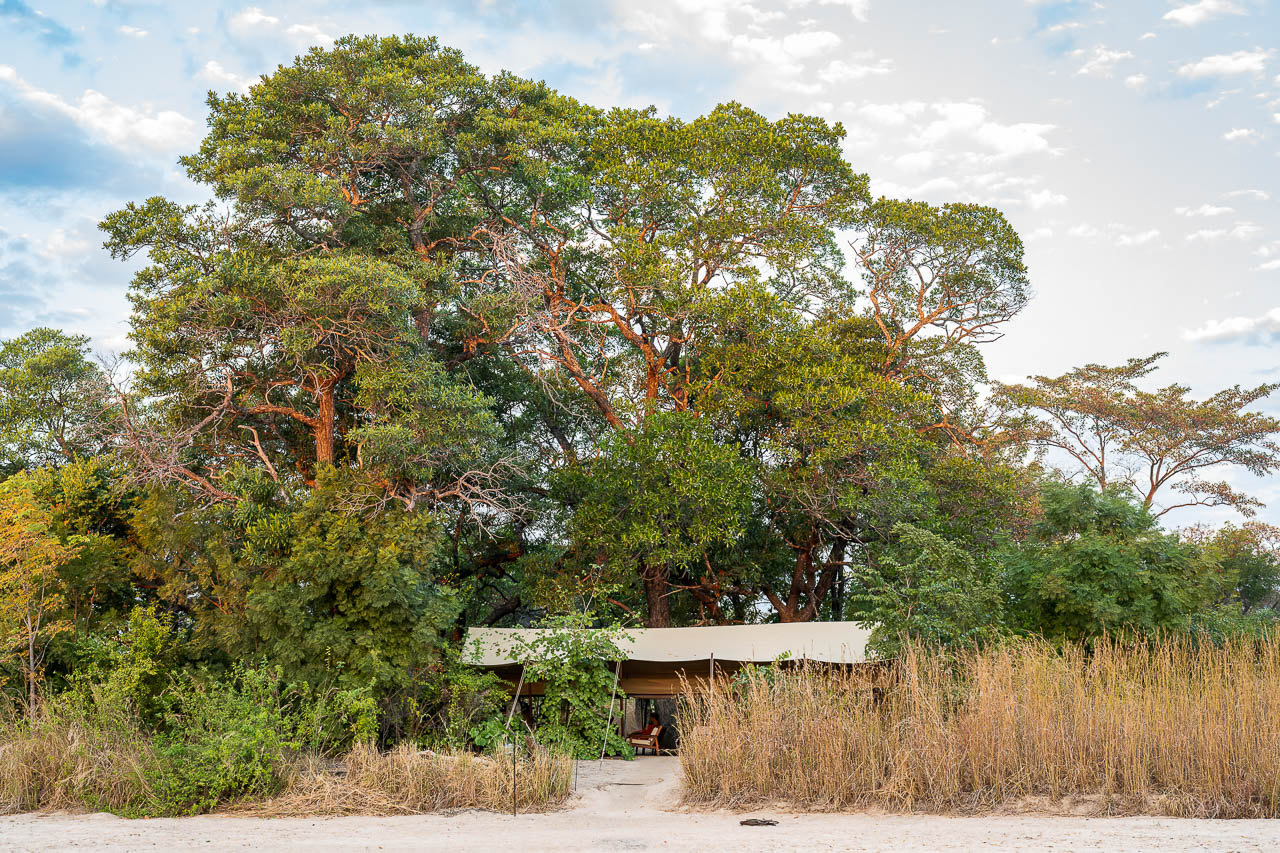
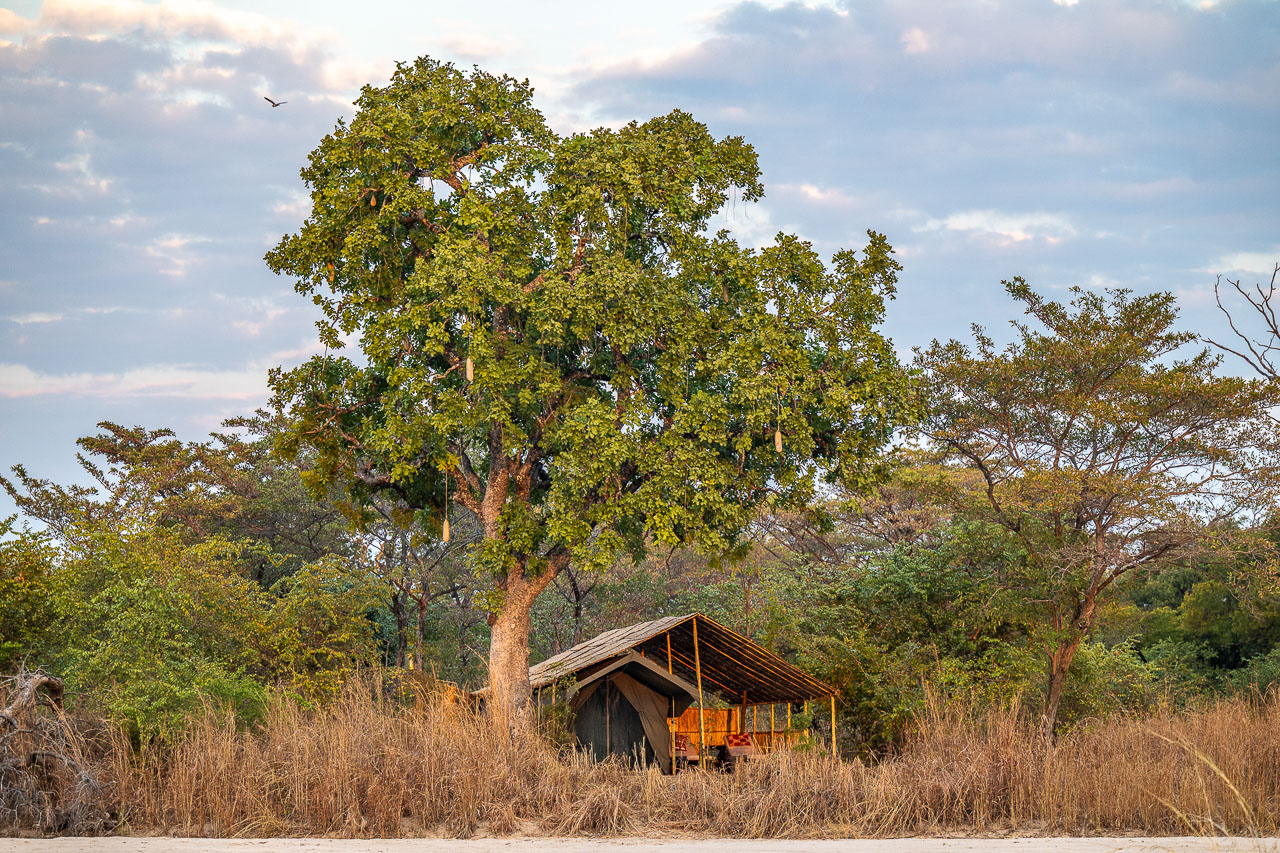
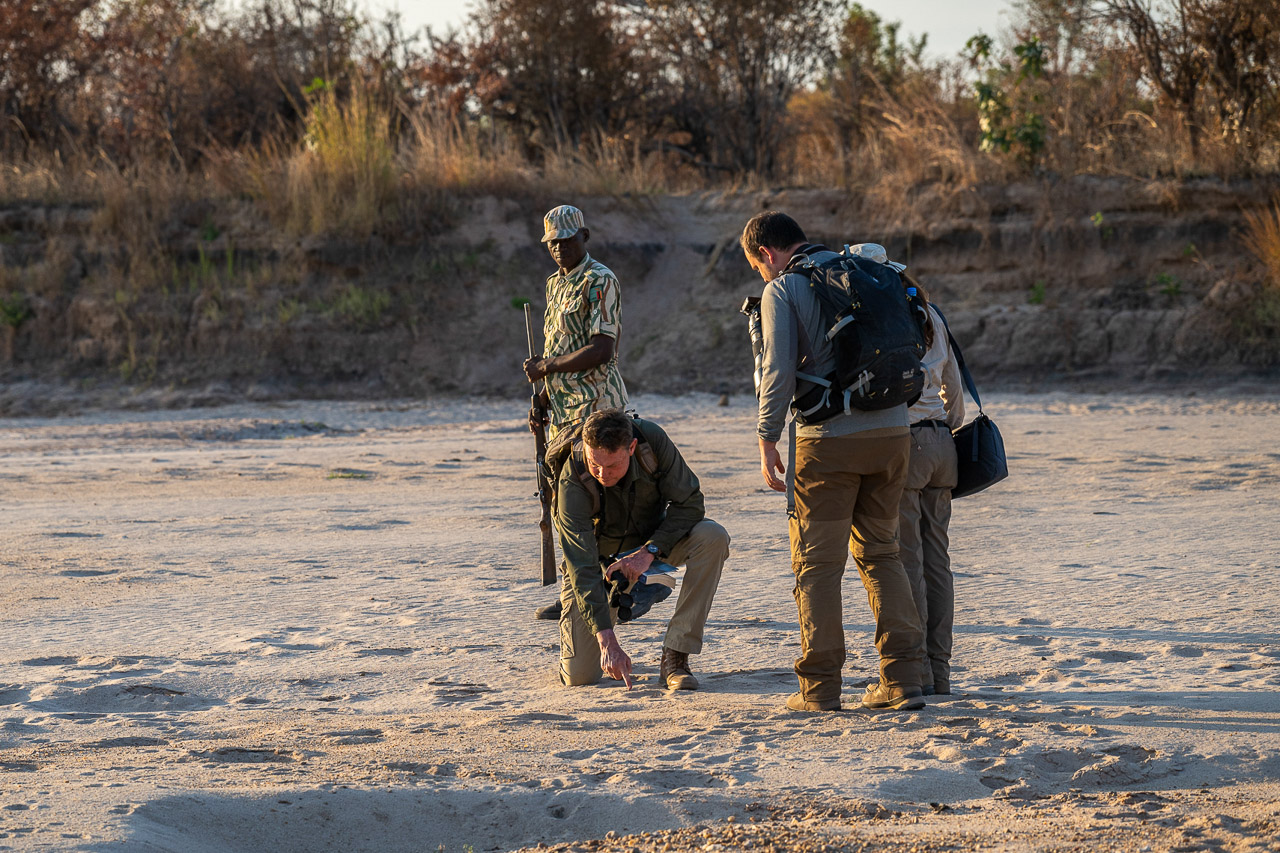
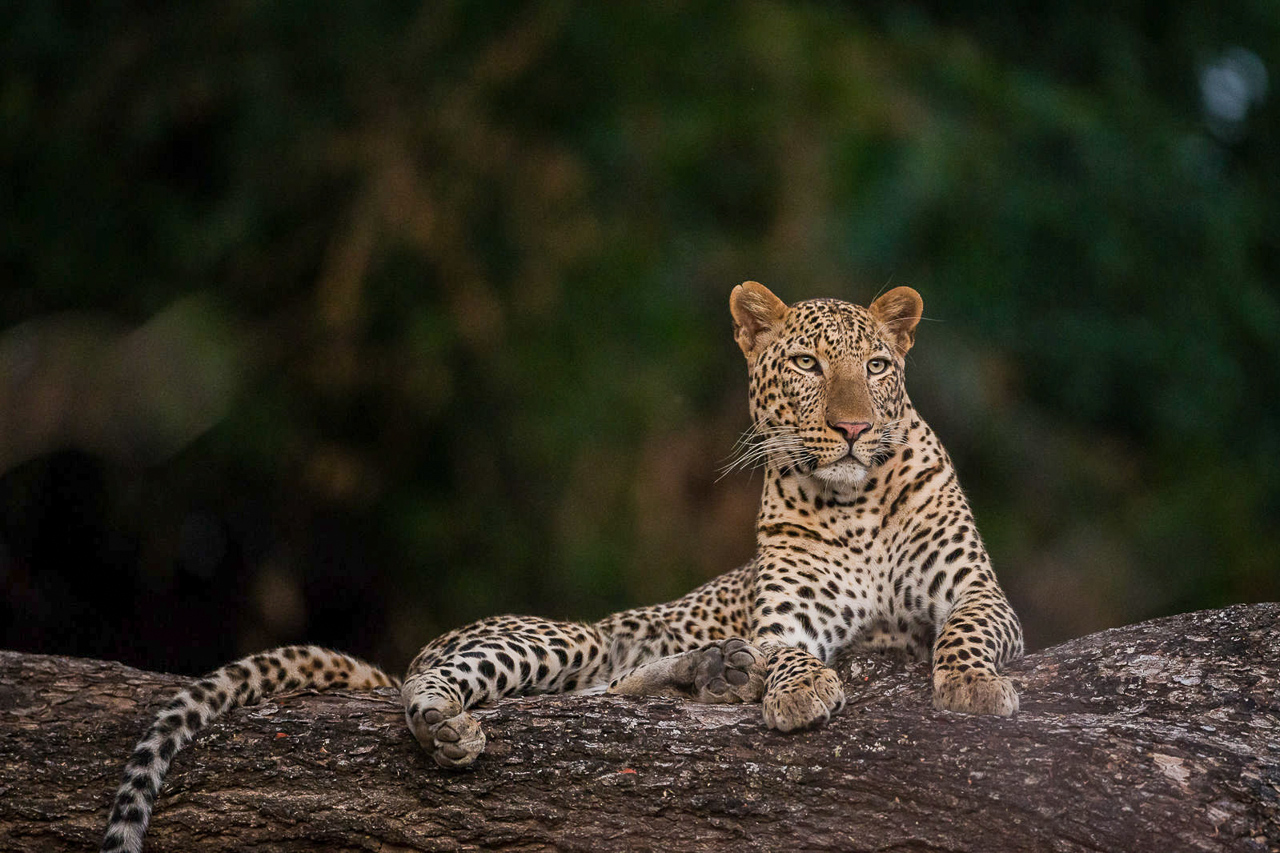
Accommodation
This small intimate camp is set on the dry Mushilashi River and has this area of the park pretty much to itself. Accommodation is in five fairly simple, Meru-style tents. Whilst the camp is comfortable enough the emphasis here is on the safari experience rather than the frills of camp.
The walk-in safari tents are a mix of back-to-nature charm and safari comfort. Each has an open-air ensuite bathroom (with hot water bucket showers and flushing loos), wooden-framed double or twin beds with crisp cotton linen, canvas safari chairs, fan, solar-powered lighting and a small charging station. Adjoining the tents an inviting outdoor lounge area with two recliners has been added to the rooms. As the camp is small and intimate, you will always receive a personalised holiday experience.
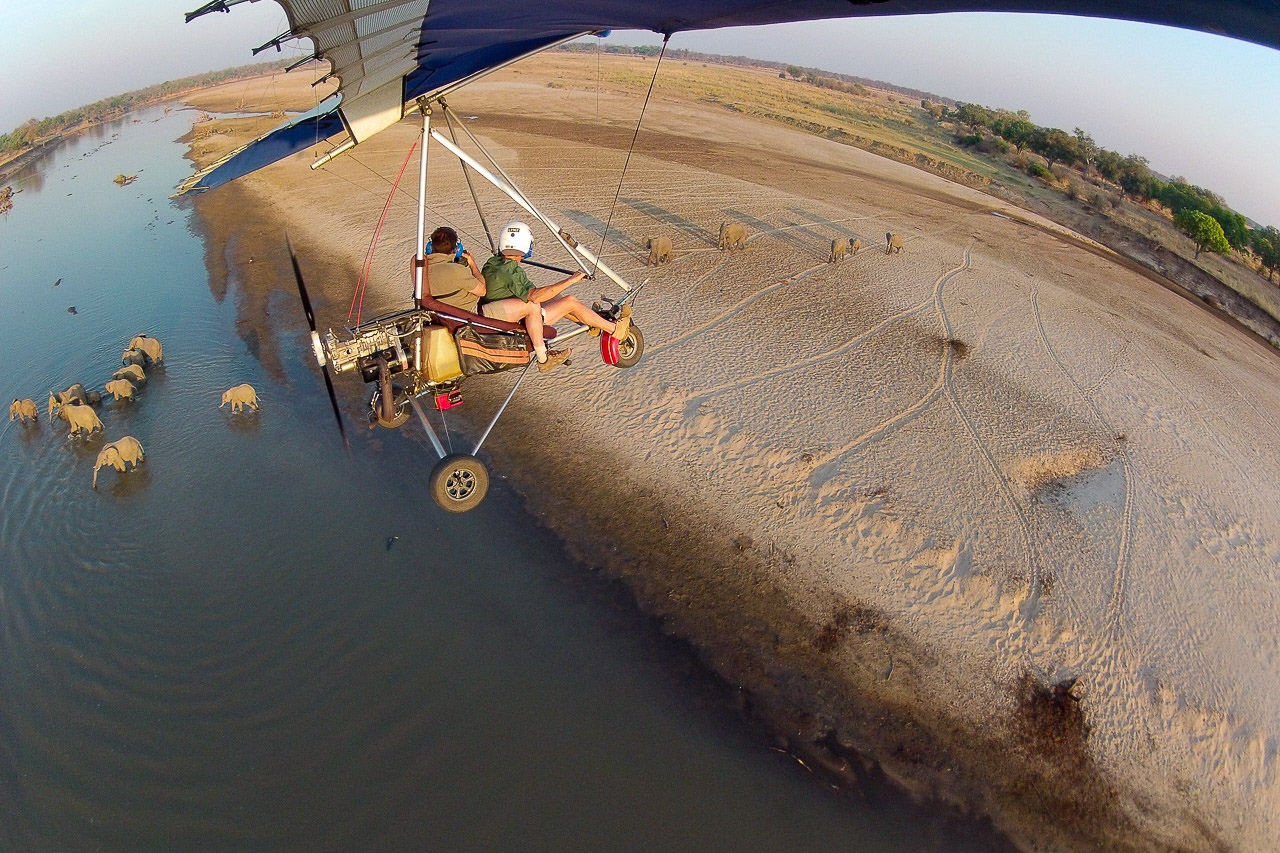
Most camps here are located close to the river, as this is where animals come to quench their thirst during the dry season. The dry season is also when the water level reaches its lowest point, exposing large sandbanks. The residual pools support high concentrations of crocodile and hippo, which tussle for the remaining water. When the wet season arrives in November, the water level rises rapidly, and the Luangwa becomes a raging torrent – it has even been known to take the odd camp with it.
The walking safari is South Luangwa’s speciality, and is available at every camp. At 500 m above sea level, the park is very hot during the summer months. If you’re not a fan of intense heat and don’t like walking safaris, then it’s best to visit earlier.
The Muchinga Escarpment, a natural boundary to the west, prevents the migration of animals. The park is bordered by the river to the east and extends into the Nsefu Sector, which stretches out from the other side of the river.
The park’s entrance gate is located at the town of Mfuwe, which has a small airport (this is where guests are picked up). Many of the less expensive camps are located outside the park, close to the main bridge. In our opinion, the central sector around Mfuwe Lodge suffers a bit from traffic coming in over the bridge. For this reason, we recommend that you avoid the main bridge and visit the southern sector, the northern sector or Nsefu sector to experience quieter safaris.

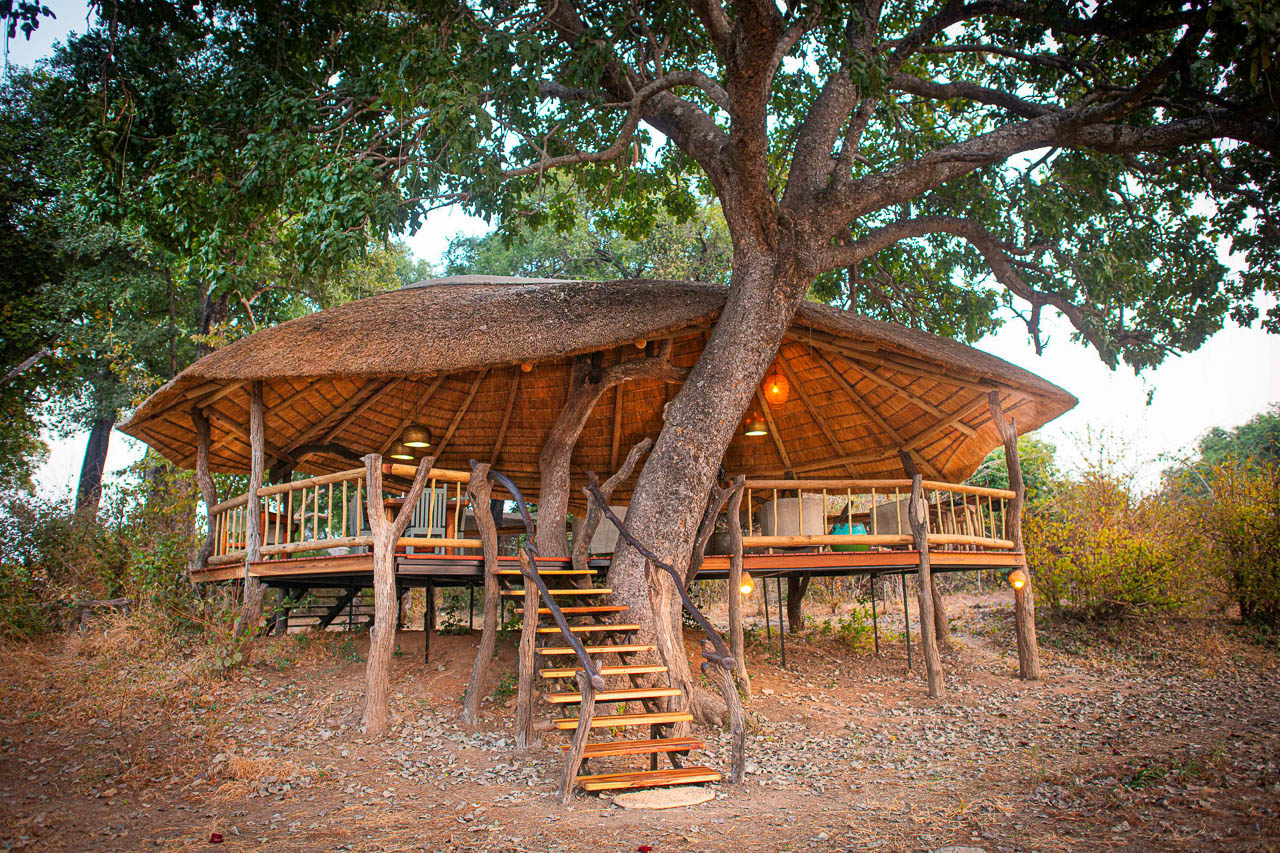
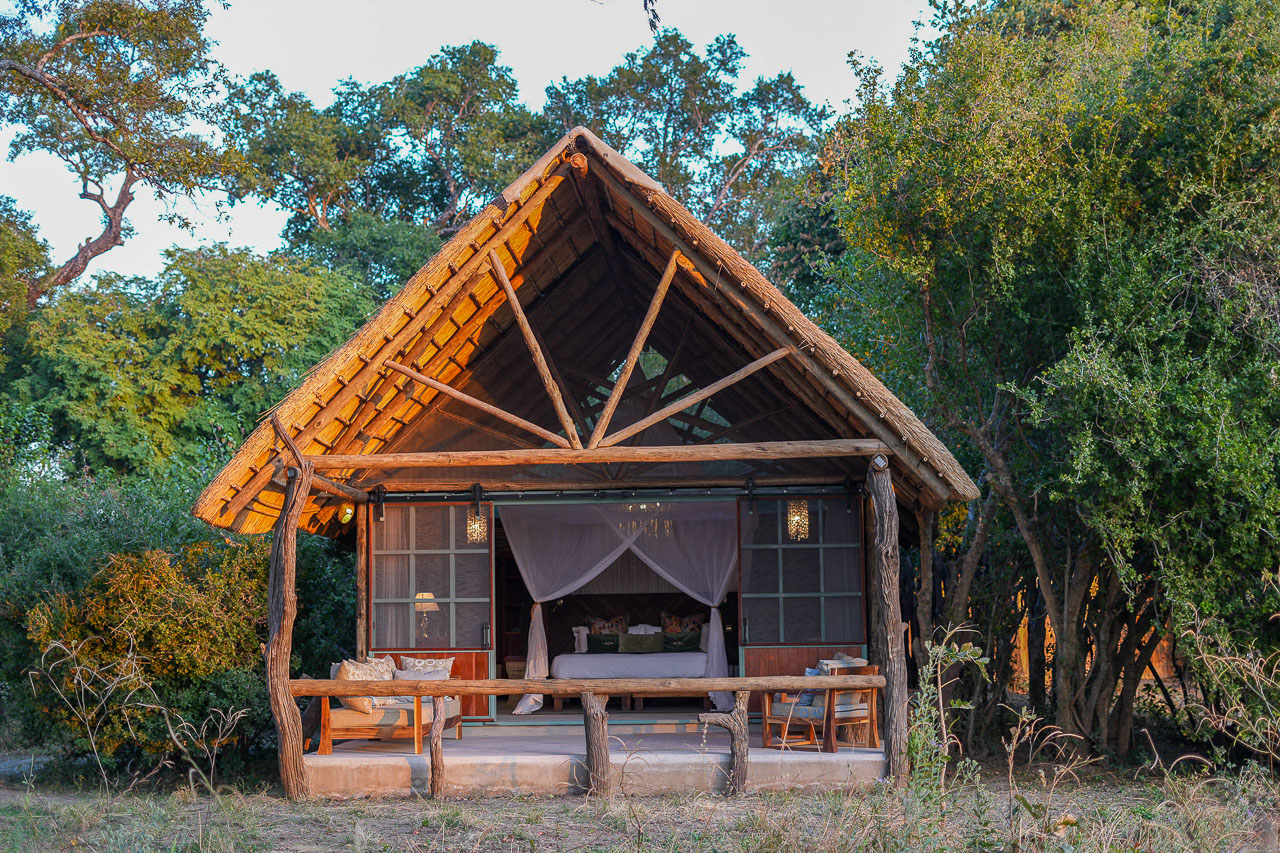
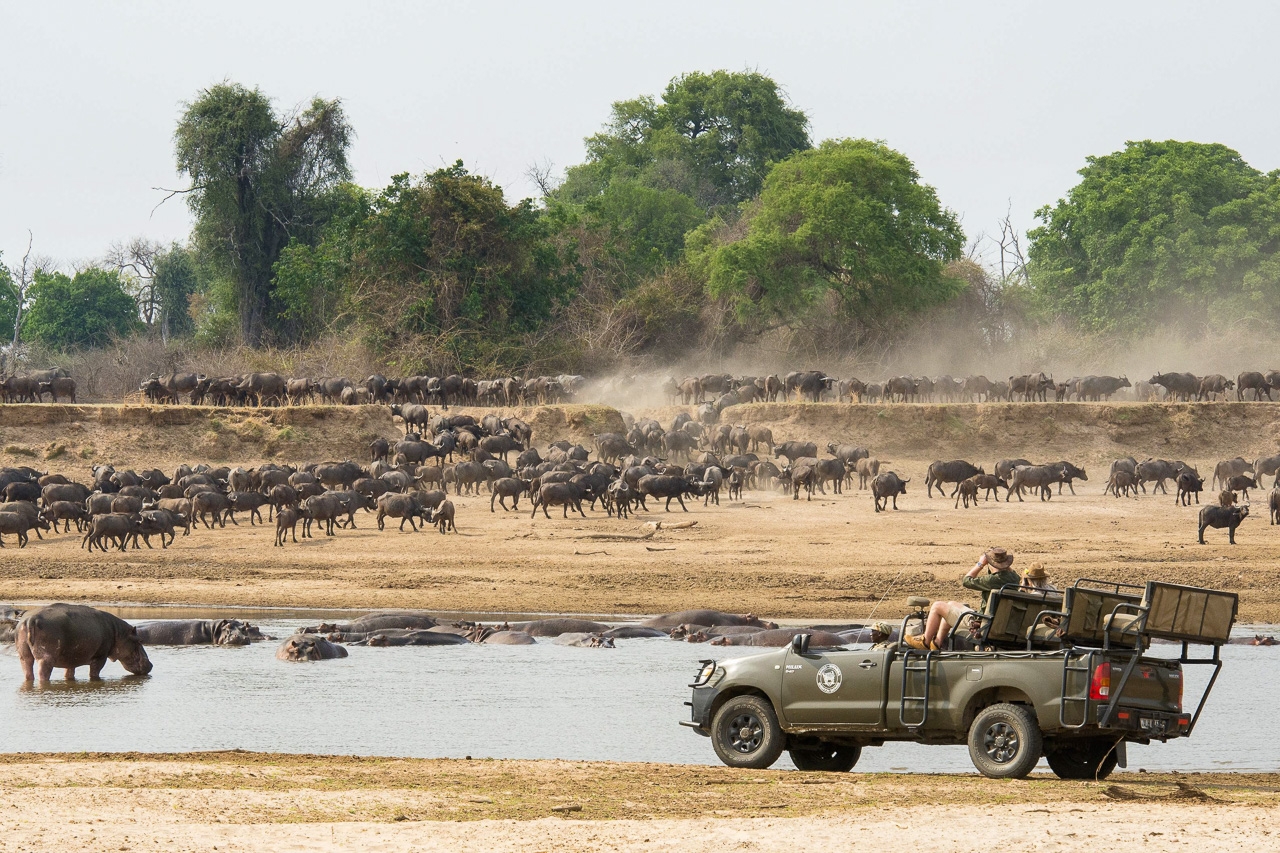
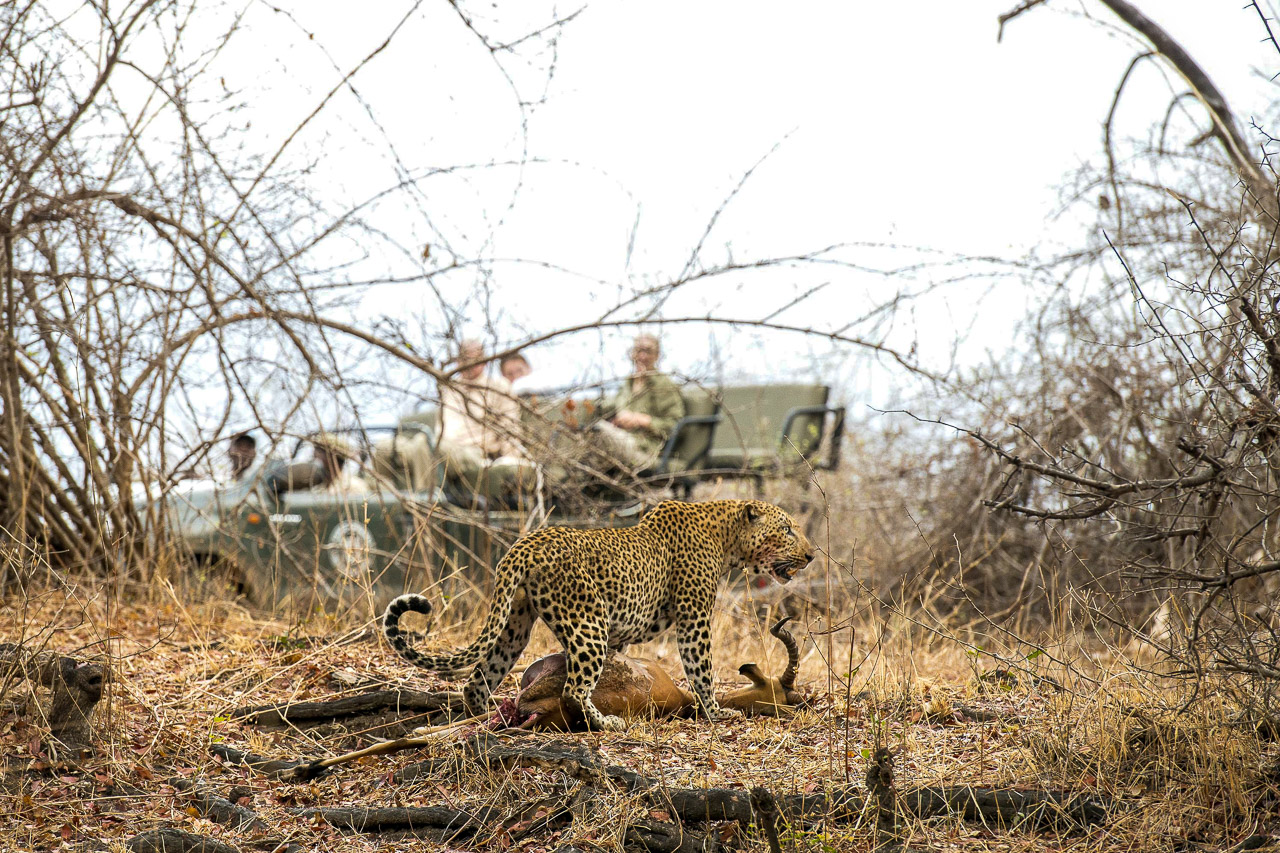
Accommodation
Mwamba Bush Camp by Shenton Safaris is often combined with its sister camp Kaingo Camp, and ideal for those looking for a small and intimate, no-frills camp. Four traditional reed houses with large open-air bathrooms sit on the dry Mwamba River riverbed and offer simple but homely accommodation.
Each chalet takes its name from the tree under which it is located: ‘Fig', ‘Ebony', ‘Sausage' and the newer 'Gardenia'. The chalets have a covered terrace to the front with seating and a sofa/day bed. Clean solar energy powers light in each room and in the hotter months the fan provides cooling.
The main building (Chitenge) is an open area surrounded by reed walls, with a lounge corner, the bar and a large table where dinner can be served under the stars. A larger lounge was built on a raised deck from where guests can enjoy the view of the usually dry riverbed.
Located just 50 m from camp, a hide looks out onto a small waterhole, which attracts a variety of wildlife. Another Shenton feature is the lookout situated atop a termite mound close to camp - perfect for a sundowner or intimate dinner.
The area between Kaingo Camp and Mwamba Camp is spectacularly beautiful with a highly varied terrain that supports a huge variety of wildlife. Animals can be seen at the river, in the lagoons (Fish Eagle and Pelican lagoons being the largest), on the dry, sweeping plains (Lion Plain, for example) and in the ebony and mopane woodlands. Derek Shenton's father was a park ranger here and he has passed on a rich wealth of knowledge to his son.
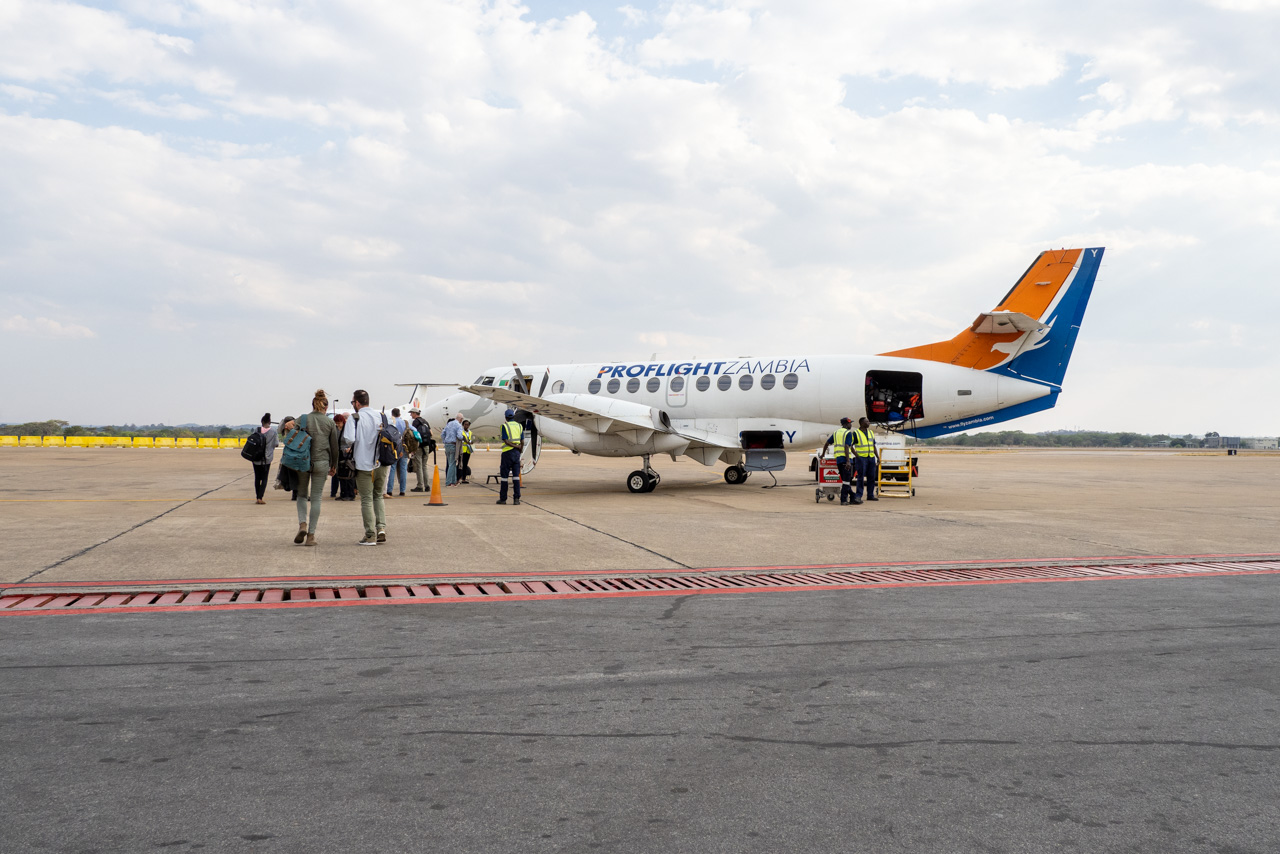
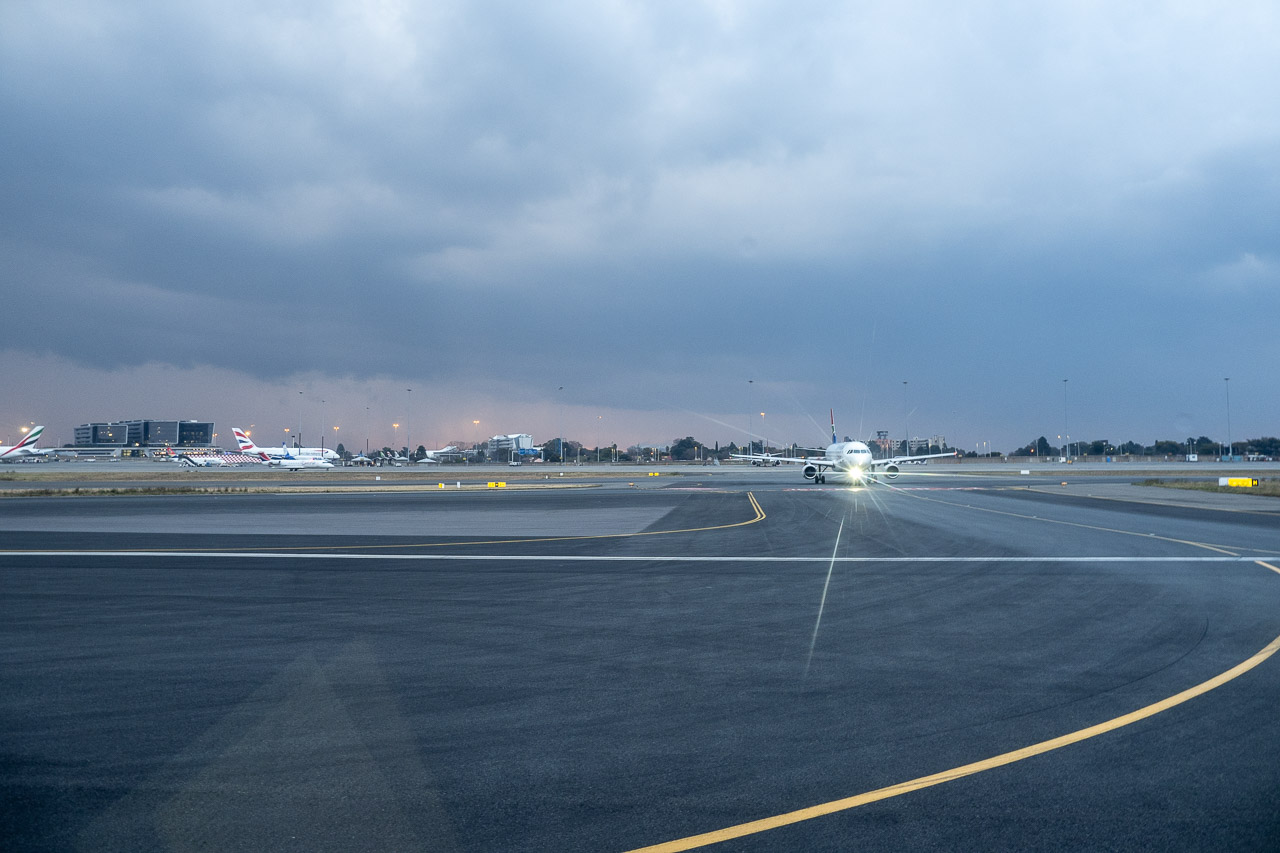
Basic Information
Individual journey. The journey will be planned on your preferred dates.
Duration 10 nights. Min 2 guests. Minimum age 12 years. Weight limit of luggage 23 kg. Luggage in one soft bag only.
Includes all transfers from Lusaka to the hotels/camps to Lusaka
- Kutali & Chula: Standard Room. All meals, drinks (except premier brands), laundry service, twice daily shared activities with one of the camp guides.
- Nkonzi Camp: Standard Room. All meals, drinks (except premier brands), laundry service, twice daily shared activities with one of the camp guides.
- Mwamba Bush Camp: Standard Room. All meals, drinks (except premier brands), laundry service, up to three times daily shared activities with one of the camp guides.
Learn more about these areas









